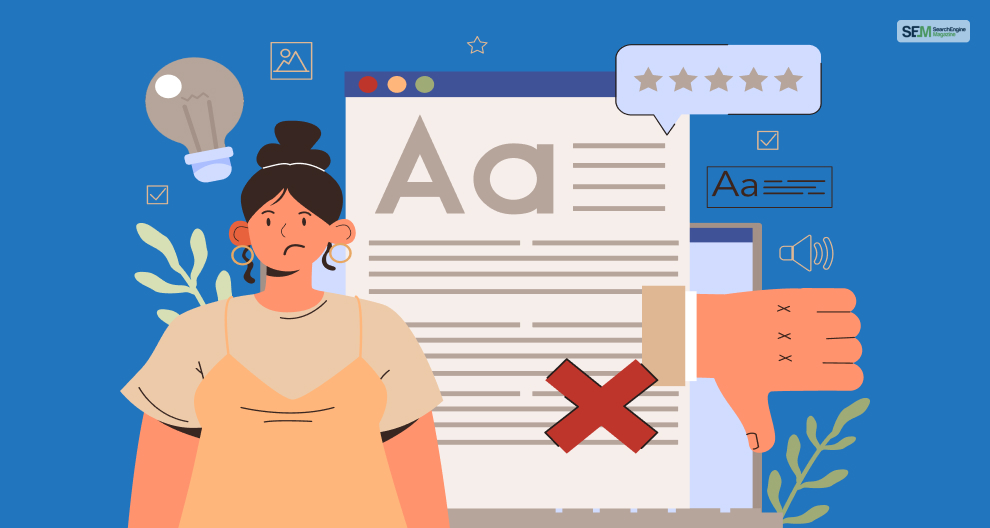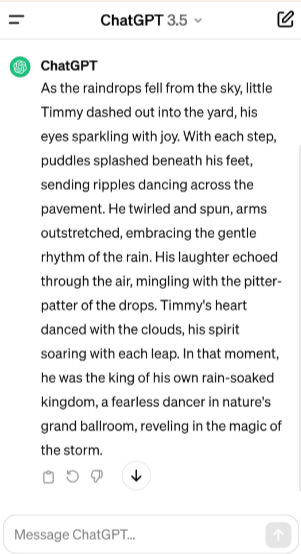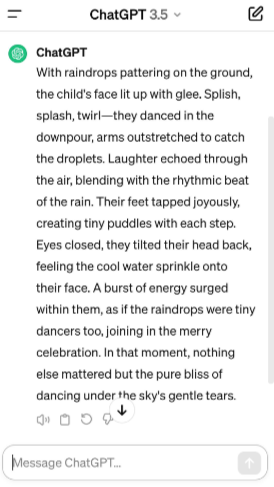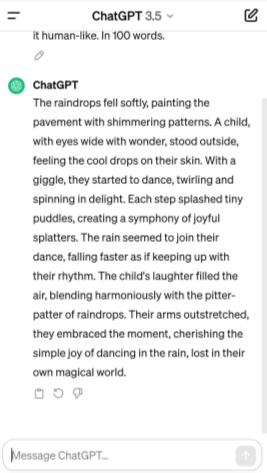White Label Link Building: How Does It Work For SEO Agencies?
Dec 19, 2025

Dec 19, 2025

Dec 18, 2025

Dec 17, 2025

Dec 15, 2025

Dec 15, 2025

Dec 15, 2025

Dec 13, 2025

Dec 12, 2025
Sorry, but nothing matched your search "". Please try again with some different keywords.


From technical SEO to website loading speed, many ranking factors can affect your website. However, I, who was working as a full-time content writer, was always wondering – what is under my control?
Do I really need to learn everything regarding technical SEO? Do I know enough? Is writing good content enough?
I was bombarding myself with these questions as well, just like every other digital marketing enthusiast who is just starting as a content writer.
Now, five years later, I am older and certainly SEO wiser. One day, I was thinking about my time as a novice content writer with no knowledge of off-page & technical SEO, and I couldn’t help but ask myself –
What if there was an SEO ranking guide molded just for content writers? Vis a vis, everything and anything they can do to help rank their content (…and website by proxy) higher.
So that they do not feel demotivated, thinking they are not doing enough. Afterall during my learning years of content writing, the only thing that kept me moving was this single thought –
“I am contributing to the website with my SEO knowledge, and I still have a lot to learn.”
If you are also moving forward with the same principle, here is your ultimate guide to becoming an on-page content SEO wizard.

Every digital marketing individual (no matter what their expertise) is mildly terrified of Google core updates. However, there is one update that took the internet by storm, which is the current Google core update of March 2024.
Google decided to declutter almost every content & website, which is not helping the audience. Helping us means providing the right information, which allows them to make better choices, rather than your websites being a simple cash grab.
From the impact of unedited AI content, which was published just for the purpose of indexing a website – to writing content that is scarped, every website is still quaking from the aftershock.
However, amidst all the negative impacts, we still managed to find one silver lining. Google does value well-written, thought-provoking content. So, without knowing much on-page SEO, you can help rank your content with your excellent penmanship.
Now imagine the leverage you will get when you give good content while also sprinkling SEO techniques.
Get ready to be your algorithm’s favorite!
Upon checking through my content’s ranking factor and making a few inquiries from my SEO friends, I came up with twenty ranking factors that can boost your content.
This is where you get your pen & paper out, and let’s get into it!

If the content is king, quality is the queen piece; saving it!
Your content will always remain the most important element of any website, whether you are a blog or a web content writer.
However, Google’s search engine is efficient now. You cannot fill your content with only SEO tactics without paying no attention to your content quality and expect it to rank.
You cannot cater to the audience by just pleasing the algorithm. In fact, pleasing your audience with good content will help you please others.
So, what is considered as quality content?
There is no set-in-stone explanation for this. However, according to my research, there are three things you should remember.

When talking about quality, there is something called a gap in content. Finding the gap will give you extra leverage over your competitor (…other top-ranking blogs in the SERP).
In my experience, every time I answer a question, the reader isn’t bothered by asking; I give them something extra. Bam! I get ranked high.
It is all about getting into your audience’s mind and understanding what they are asking.
Yes, I am talking about the ultimate search intent!
Understanding what exactly they are looking for (…might be looking for) and providing that answer.
An easier way to create a bridge between what is already there, and your gap content is by providing simple tools. Some of the common examples are:
See if you can incorporate those in your blogs.

Your good-quality writing streak will diminish with one mistake. Grammatical & spelling errors play a very negative role – not only on the Google algorithm but also on your audience.
Think about it while placing yourself in the seat of a reader:
Even if you find one grammatical mistake in a blog, are you likely to go back there to read more of their content?
Will you consider that website to be one with high authority?
Would you consider the writer to be an expert?
Exactly!
An error is a sign of haste, and the Google Core Update of 2024 already clarifies that publishing too much content on the same day is spammy behavior. Therefore, haste is poison to your content SEO.
Once you are done writing, edit! & then edit again. Proofreading is your weapon.
Tip: Stop being too dependent on grammar-correcting tools. They are there to help you, not to substitute human editing.

This is going to be the controversy of our decade!
Do we dare, or do we not?
Now, AI can be helpful in many instances if you use them right.
However, can AI write content like a human? & I don’t mean just acting in human-like language. Can AI content add the same value and be termed as “helpful content?”
The short answer is NO!
Yes, you can edit your AI write-up and add and subtract some information, but at its core, it would remain a compilation of content AI is finding throughout the internet. Afterall, one cannot provide original applied research, personal touches, and unique experiences. The key ingredients to create original content add value to the audience’s search.
You can teach AI how to write like you, but can you teach them to emulate your life experiences in the content?
Therefore, if you plan to write for your audience, try to type away!

The fast-paced digital world surely has a few drawbacks – A major one being the depilating attention span of your readers.
Among us writers, this is one of the most common concerns: How can I make my writing easily understandable? How do I ensure my writing is not boring to the audience?
If you are a fan of using tools like Flesch Reading or Hemmingway, you should know about reading level scores.
It is to ensure that your content is understandable by a 13-year-old. Have you ever wondered why?
It is not that your readers are a bunch of 13-year-olds. In fact, some of them even have a college degree. Then what does this rule imply?
There is a difference between reading a novel and reading a blog. Many read novels for recreation or entertainment. On the other hand, we read blogs because we want information and immediate answers.
Imagine you are reading this blog to learn about the ranking factors in Google. Would you find interest in it if there were –
a. Too much jargon beyond your understanding?
b. Me beating around the bush rather than answering your query?
c. long paragraphs (even long chapters in a book, I voluntarily picked can irritate me!)
This is why the reading level is so important. Content written for a 13-year-old is simple and easy to understand. Therefore, it appeals to the audience more!
Stop setting the scene to an alarming level in your content. Get to the point; your audience will appreciate them more.

No matter how much you try not to judge a book by its cover, you eventually do – don’t you?
The same rule applies to your content title. Whether it’s SEO or blog title, it must catch your reader’s attention.
Here is the trick I use to make it clickable (…without making it clickbait)
“A Number (Top 10/Top 20 Reasons) – intention to answer a query (Why you should/How you should) – year (in 2024)”
This manages to please the audience & the algorithm. You can easily fit your focus keyword in it while ensuring you are about to answer a query. Therefore, just through your title, you are letting yourself promise a reader’s satisfaction. The numbers make your blog less overwhelming, i.e., viewers know they will have 10/20/30 concrete ideas that they can try.
This is your SEO title.
Now, talking about your blog title. The trick here is to make your audience curious. This is where you can make your title a little longer and add a shock factor.
For example: How I Took My Instagram Following from Zero to Thousand in Two Weeks

Bleeding into the point of ‘ease of reading,’ this is another factor that helps you add emphasis on the important details.
Plus, bullets help you to rank your article in the feature snippet. Google sees it as a simple way to answer queries quickly, especially when everyone on the internet is looking for bite-sized content.
Note: This is not a quick fix to get all your articles ranked faster. So do not overuse it. The biggest weapon of a writer is to know what to write to garner interest among your viewers.

Are you constantly wondering why your top-ranking content is suddenly falling behind?
Chances are, it was helpful before – it is not helpful anymore!
Because the content is old, information is saturated all over the internet. Google might still decide to rank authority sites with stale information, but a new or intermediate website doesn’t hold a chance.
Adding freshness to your content through new information/experience is the key that you hold against your competitors.
In fact, according to an experiment done by Search Engine Journal, newness is a definite ranking factor for your content.
It is not just finding gap content in your new blog post but also moderating your older ones with new updates.

Alongside newness, we cannot deny the effect of the shock factor on your content!
Adding something that will surprise your audience and make them more curious is a good way to make them read the entire content.
Remember how when you read something interesting, you instantly want to read it to the end (…no matter how long)? Because I do!
When I say shock factor, I do not mean writing something negative, giving in to click baits, and perpetuating fabricated news. We see it often done in low-grade internet tabloids!
It is all about finding that one factor that can intrigue your audience’s interest meter and keep them coming. Do not click out of your website after facing some form of clickbait deceit!

Links can be tricky!
Is there something called too many links or too little?
According to the last Google core update, there is something called “too many external links.” Plus, it can negatively impact your website’s reputation.
External linking to high-authority blogs can help your audience get more intricate data regarding the subject matter. Afterall, you cannot pour the contents of a research paper into your blog.
However, you must be judicious about it!
What should you do?

Yes, Google assigns an EEAT score for your website depending on a plethora of factors. However, have you wondered what control you have as a content writer?
Your own expertise helps build authority!
For example, if you have worked in a certain field for a long time and have the experience to back it up, your blogs should emulate them.
Have a degree? Use it! Provide authentic information.
The bottom line is you do not need to be an expert at everything. But, if you are an expert in something, a consistent author bio can bring authority to your website.

Your presentation can take your content from a meh…to a 100!
&
Images are the crowned jewel of it.
Mindfully pepper your blogs with high-quality images. Creatively visually, your content is one of the best parts of being a content writer. Plus, the high-dimensional photos work as the perfect break to cut the monotony of your writing, allowing viewer retention on the page.
If you are not a pro in Photoshop, you can always use tools like Canva to create your dream visual effects.

If you have been working on SEO content writing for quite some time, you should be aware of standalone topics.
This is when a certain blog is not a part of any other element throughout the website. Oftentimes, writers use a standalone topic that has high-ranking potential. However, the inability to create a proper architecture around that topic can create a short-lived ranking.
This is why creating the right silos is important to help your website in the long run. Silos is when you create a group of blogs through content clusters (…talking about the same parent topic).
Overall, if your audience is spending that extra time browsing through your website, it is a massive green flag for Google’s algorithm. It predicts that your content must be useful and engaging.

Font is a minute unit of your content, which can have a major effect on your audience’s psyche!
Although you might not be directly controlling the content font (…considering someone else is designing your website), you should have an opinion.
A good way to decide whether a font checks the readability mark is by placing yourself in the reader’s seat.
Is the size of the font moderate and readable?
Can the font strain your eyes if you stare at it for too long?
Is there enough space between the words and the lines?
Even if your content is long, sometimes the placing of text can create an illusion of less content. Readers are more interested in persuading through a text when they do not feel like there is too much to read ahead.

When we talk about font size, we also must place emphasis on paragraph lengths and sentences.
According to Yoast SEO score, if more than 25% of your content contains longer sentences (more than 20 words), you can have a bad readability score.
Now, you know, as a content writer, I am not a big fan of AI tools. However, I do have to agree with this.
A poorly formatted sentence and paragraph can be a catalyst for your low ranking.
No, Google is not reading your article, but they are surely checking your viewer’s pattern. If it dictates a lack of interest, your content is not helpful enough to rank higher.
Psychologically, you disengage upon seeing long texts & paragraphs. Especially when it is a troubleshooting blog, and you are looking for that one quick answer.
Do not always depend on tools to shorten your sentences. Your editing game should be top-notch.
Invest a good amount of time after writing your article to carefully edit every sentence.
At the end of the day, you as a reader should be satisfied (…not just you as a writer).

Have you ever gone through a blog and been skeptical about the information? But then, you see the information being backed by data, and boom! Suddenly, there is something credible to believe. Now, this website is a credible source for you to come back to!
This is the definition of “helpful content,” which Google always rages about.
The more data-driven your blogs are, the more reliable you sound!
You can also add visual aids like graphs, and charts to make your content easier to consume.

It is imperative to talk about other visuals which attract your audience.
Texts & images are the basic ingredients of a proper blog. But what takes your content from good to great?
Other visual aids!
Studies show that your viewers remember 10% of what they hear, 20% of what they read, and 80% of what they see. (Source)
Therefore, if you want to make that long-lasting mark on your audience, visual aids are a must.
These simple additions can help you provide that value proposition that others aren’t.

Sometimes you can spend an entire day trying to find the GAP!
Every article ranking seems to look the same to you? Refurbishing the same information?
If you want to find a GAP & stand out in a waterlogged content, start finding your own GAP.
Original research is the key!
Try to add your own original applied research within your content. It is not as complicated as it sounds. Source is available everywhere; talk to your friends, family, and colleagues. Gather real-life data to add that extra salt to your writing.

Your entire website cannot be a hotspot for linear communication. You cannot shove information down to your audience and then give them no outlet for interaction.
No matter how tiresome it sounds, it is imperative that you go through every comment, approve them, and start replying!
As a content writer, it is not just your job to write. You must brandish your connection bandwidth elsewhere, too.
Do you not have a social media account?
Based on your website niche, this is how you can begin:
Do not overwhelm yourself by trying to open all the accounts at once. Conquer one social media application at a time. Keep track of your followers, and routinely answer their queries in the comment section. Plus, have a regular schedule to always be on top of the feed!

I cannot stress this point enough!
Stop piggybacking on your old content, which was bringing organic traffic once upon a time. If you are still doing so, this core update is going to be a nightmare for you!
Google is adamant about deindexing every possible unhelpful content!
One of them is old content with worn-out data!
If you do not wish to mass delete content from your website and suffer the inevitable consequences, it is high time you start modifying your content based on the recent updates.
In fact, this will give your ranking articles an extra boost.
You also need to check for core updates for other SEO practices. For example, if you have a small business, alongside google core update 2024, you also need to see the changes in local seo for small business.

When it comes to SEO practices as a writer, it could be difficult to balance your creativity and maintain the on-page SEO check.
How about I tell you that you can keep your creativity intact and still manage every SEO checklist by the book?
Shocking?
It is possible! Just keep in mind these SEO mistakes to avoid while writing…
How many of you still compile content from different-ranking articles?
Still, scrolling through different websites to create a blog?
No judgment because I am guilty as charged. When I started as a content writer, I used up all my skill in perfectly paraphrasing every piece of content I scraped.
It was 2021, and we were all having a gala time before getting hit by multiple core updates.
Although every piece of information in Google is in the public domain, scraping content from everywhere makes you just another fish in the sea.
In the oversaturated SERP, your content provides nothing extra to the audience. On the other hand, scrapping valuable content like someone’s personal information or copyrighted images could cause you to suffer a permanent ban.
This is a fate worse than scrapping!
As writers for the digital realm, there is nothing more unethical than taking content from other writers.
&
If you believe duplicating your content from ranking pages will fool the crawlers, you are wrong.
Under Google violation claws in the “Scrapped content Spam section,” it clearly states that duplicated & paraphrased content can lower your chances of the index. Plus, frequent practice can also lead to a high spam count.
Unethical paraphrasing is a fancy duplication!
This is when you want to keep your content plagiarism-free, so you paraphrase your content with the help of Artificial Intelligence or another paraphrasing tool.
Google can penalize your website since it doesn’t count as well-thought-out content.
When AI writing first came to the market, we all dipped our toes in it! (let’s be real!)
However, writers soon started to realize the following:
Poor quality
Monotony
Scrapped content
To get a proper understanding of AI content (before we completely discarded it as a possibility), my team & I did an experiment.
This is how AI content on the same topic looks from four different accounts.
Prompt: Give me a fun excerpt of a child happily dancing when it rains. Add short & long sentences with proper punctuation to make it human-like in 100 words.
Results:



Now, there will be “AI supremist” who will argue about the difference in replies. Or, how Google has never said they will flag AI content.
However, writers can see a certain pattern in all the results. Yes, editing them might bring a subtle change, but over time AI, AI-generated results will also manage to saturate the internet.
The only intelligence that can write content with endless flair & nuances is human intelligence.
So, let’s start using those brains!
Those days are gone when you hide keywords in your content by changing the color of the font, and no one is keeping an eye on it.
Google doesn’t like these practices and categorizes them as a form of black hat SEO.
So, your content won’t rank if you bombard it with hidden keywords, but you are risking a penalty!
Just because you are linking your article to “Investopedia” & “Statista” in every other paragraph doesn’t mean you are claiming authority.
Trust me, I have tried it!
It increases your bounce rate like anything because your audience is constantly back & forth.
Too many do-follow links can also make your profile look unnatural and create suspicion for crawlers.
After the Google Core Update, almost excessive repetition of any SEO practices can put you on the hot spam list.
Speaking of excessive, stop publishing ten pieces of content a day.
No matter how well-written they are, Google calls it spammy behavior. Especially with the rise of unedited AI content, too much content at the same time triggers Google’s AI meter.
It indicates unethical practices to add too much unhelpful content just for the purpose of getting indexed. You could be taking too many guest posts on your websites and publishing them all at once. This is a clear sign for Google that your website is a mere cash grab and not a true source of information.
Your writing could be Shakespearean top-notch! (Although it shouldn’t be because yond is sore to followeth!)
What we mean is that your blog could be the best out of the best, yet without the visual appeal to provide that creative break.
By this time, your content is just too monotonous to follow!

Are you still dependent on these ancient techniques that once worked but aren’t anymore?
It is time to break up with these toxic techniques!
Because you are too good of a writer to still do them!
1% is enough!
Yes!
If you write a 1000-word article, you just need a keyword density of 8-10. So, stop with the extra stuffing like it’s your Thanksgiving turkey!
Google algorithm is surely not thanking you. (Source)
Backlinking is a means to create a healthy trail around the internet. Breadcrumbs for organic audience to stumble across your website.
However, if your freshly published blog suddenly acquires too many backlinks at a time, Google can suspect black hat link acquisition.
This also increases your chance of toxic backlinking, where you link your article to poor-quality websites.
When you give so much attention to your content as a writer, why damage all that good work with a bad backlink?
Quality links with advance link building strategies will bring more traction to your website. Don’t just think about how many links you are creating, consider what value of the content is before linking on it.
Are you rejoicing in getting a domain name exactly to a high-ranking keyword?
Good, but it is going to be short-lived!
According to the latest update, matching a keyword with your domain name doesn’t give you leverage. At least not much as well-written content would do. (Source)
I know I have been rambling about content information and gap content, and I have answered every query for half of the excerpt. However, like every other exaggeration, there is something called too much content.
Especially when you cannot give new information and fill your blog with fluff.
The redundancy is too much, so stop typing if you have written enough. You can end your article in the sweet spot! – 1500-2000 words!
Writing has evolved heavily over the years!
From novels to printed pages to digital screens. This has changed the way we write for each of these platforms.
However, true wordsmiths, at heart, always feel a subtle hesitance to maintain SEO while writing their blogs. Truely, it can affect your creativity to a certain extent. Maintaining your penmanship while knowing what to write about is a challenge.
So, remember the three golden rules:
I hope that was helpful and made you useful amidst this Google Core update 2024. Did I miss out on something? Please help your fellow writer and add it in the comment section below!
Mashum Mollah is the feature writer of SEM and an SEO Analyst at iDream Agency. Over the last 3 years, He has successfully developed and implemented online marketing, SEO, and conversion campaigns for 50+ businesses of all sizes. He is the co-founder of SMM.
View all Posts
White Label Link Building: How Does It Work ...
Dec 19, 2025
Marketing Fundamentals: How To Build Your Fir...
Dec 18, 2025
AI SEO: Why It Matters & How To Rank O...
Dec 17, 2025
Best QA Testing Tools For Agile Development T...
Dec 15, 2025
NewzNav.com 2014623980: Is This News Site Wor...
Dec 15, 2025

